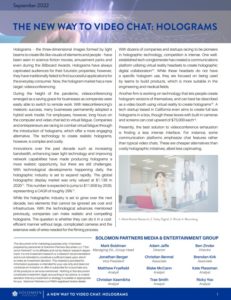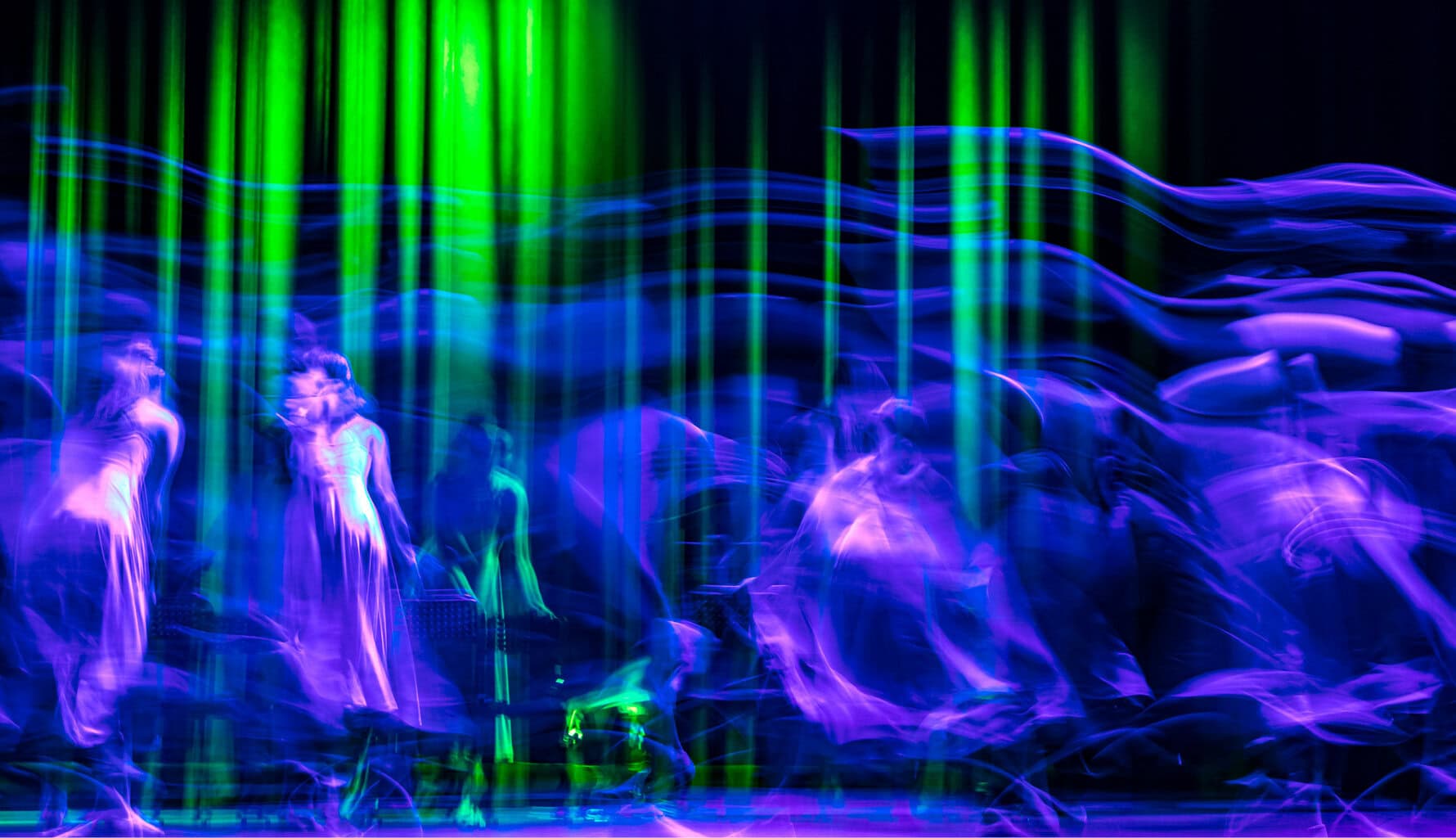 The New Way to Video Chat: Holograms
The New Way to Video Chat: Holograms
Holograms – the three-dimensional images formed by light beams to create life-like visuals of elements and people – have been seen in science fiction movies, amusement parks and even during the Billboard Music Awards. Holograms have always captivated audiences for their futuristic properties; however, they have traditionally failed to find successful applications for the everyday consumer. Now, the hologram market has a new target: videoconferencing.
During the height of the pandemic, videoconferencing emerged as a saving grace for businesses as companies were easily able to switch to remote work. With teleconferencing’s meteoric success, many businesses permanently adopted a hybrid work model. For employees, however, long hours on the computer and video chat led to virtual fatigue. Companies and entrepreneurs are racing to combat virtual fatigue through the introduction of holograms, which offer a more engaging alternative. The technology to create realistic holograms, however, is complex and costly.
Innovations over the past decade such as increasing bandwidth, enhancing laser light technology and improving network capabilities have made producing holograms a more realistic opportunity, but there are still challenges. With technological developments happening daily, the holographic industry is set to expand rapidly. The global holographic display market was only valued at $1.13B in 2020. This number is expected to jump to $11.65B by 2030, representing a CAGR of roughly 29%.
While the holographic industry is set to grow over the next decade, two elements that cannot be ignored are cost and infrastructure. With the technological advances mentioned previously, companies can make realistic and compelling holograms. The question is whether they can do it in a cost-efficient manner without large, complicated cameras and the extensive web of wires needed for the filming process.
With dozens of companies and startups racing to be pioneers in holographic technology, competition is intense. One well-established tech conglomerate has created a communications platform utilizing virtual reality headsets to create holographic digital collaboration. While these headsets do not have a specific hologram use, they are focused on being used by teams to build products, which is more suitable in the engineering and medical fields.
Another firm is working on technology that lets people create hologram versions of themselves, and can best be described as a video booth using virtual reality to create holograms. A tech startup based in California even aims to create full-size holograms in a box, though these boxes with built-in cameras and screens can cost upward of $75,000 each.
Presently, the best solution to videoconference exhaustion is finding a less intense interface. For instance, some communication platforms emphasize chat features rather than typical video chats. These are cheaper alternatives than costly holographic initiatives, albeit less captivating.
Click below to read the article from the Media & Entertainment Group.
Read the Article


